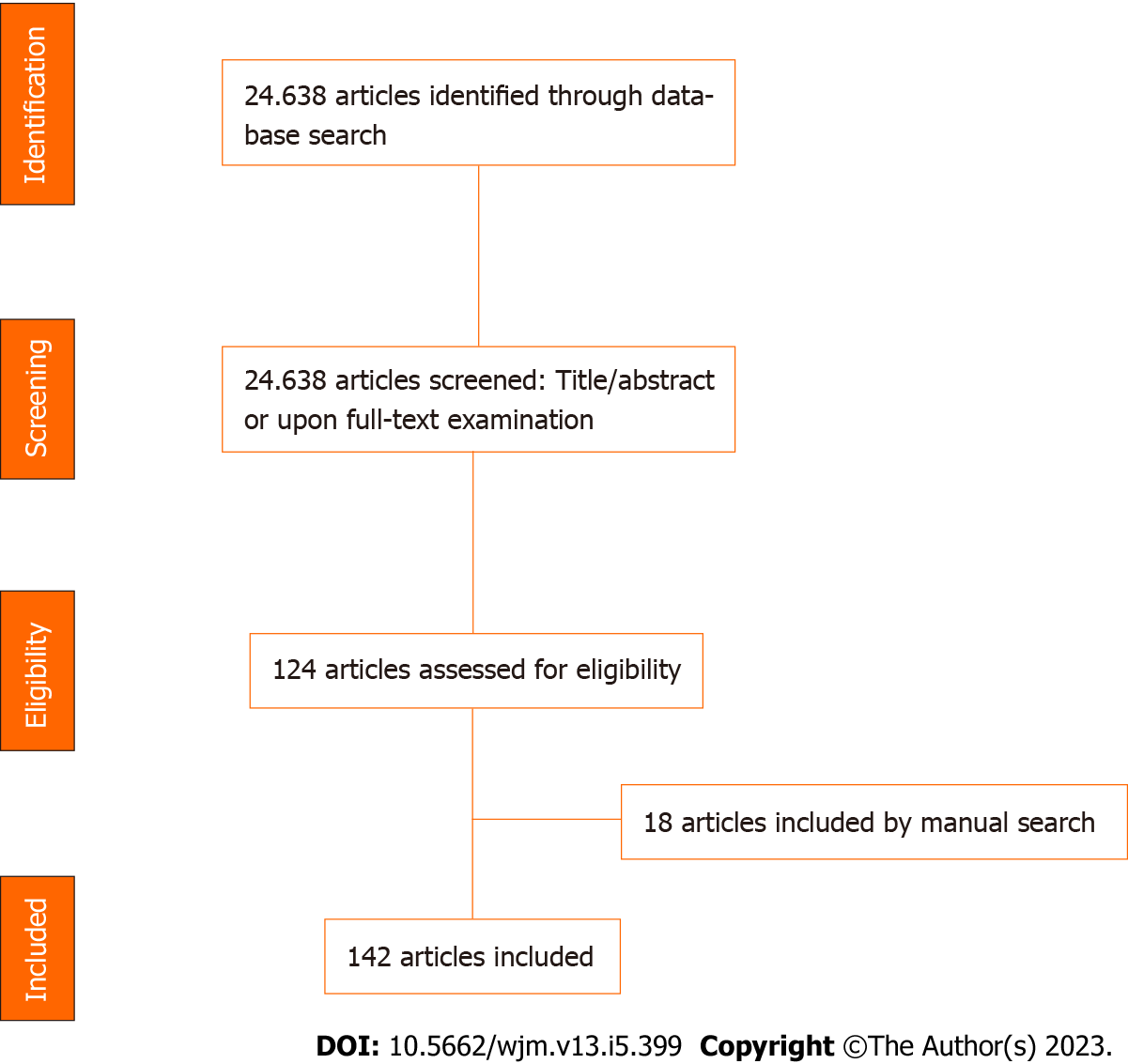Copyright
©The Author(s) 2023.
World J Methodol. Dec 20, 2023; 13(5): 399-413
Published online Dec 20, 2023. doi: 10.5662/wjm.v13.i5.399
Published online Dec 20, 2023. doi: 10.5662/wjm.v13.i5.399
Figure 1
Summary of the articles selection process.
Figure 2 Clinical presentation that can occur in Crohn’s disease patients.
The symptoms may be fever, abdominal pain, diarrhea, as well as extra-intestinal symptoms, such as episclerits, anterior uveitis, cholagintis, arthritis, erythema nodosum, and pyoderma gangrenosum.
Figure 3 Montreal classification of Crohn’s disease.
A: It involves age at the diagnostic; B: Inflammation locality; C: Behavior of the disease. For A, ages of ≤ 16 years, 17-40 years and > 40 years are classified to A1, A2 or A3, respectively. Depending on location (B), this disorder can be classified in L1 to terminal ileum, L2 for predominant disease in colon, L3 if ileocolonaccometiment, and L4 for illness in upper gastrointestinal tract. Finally, according to behavior, Crohn’s disease can present as inflammatory, stricturing or penetrating, being classified in B1, B2 or B3, respectivelly. GI: Gastrointestinal tract.
- Citation: da Silva Júnior RT, Apolonio JS, de Souza Nascimento JO, da Costa BT, Malheiro LH, Silva Luz M, de Carvalho LS, da Silva Santos C, Freire de Melo F. Crohn's disease and clinical management today: How it does? World J Methodol 2023; 13(5): 399-413
- URL: https://www.wjgnet.com/2222-0682/full/v13/i5/399.htm
- DOI: https://dx.doi.org/10.5662/wjm.v13.i5.399











